August 6/19 12:21 pm - Review - 2020 Specialized Epic S-Works Hardtail
Posted by Editor on 08/6/19
Earlier in the summer, we were invited to attended the 2020 Specialized product launch. Chad Grochowina will be filing a series of reports over the next six weeks, as various products are introduced to the market.
For the 2020 redesign of the Epic HT, Specialized set out to make their really light hardtail race bike even lighter and more capable than before. With World Cup XC tracks changing, gone are the days of buff and flowy courses; bike racers are now seeing rougher and more demanding tracks where the bike not only has to be light and climb really well, but it has to handle some steep and nasty descents. The new Epic HT is the most recent evolution of an XC race bike designed to handle the demands of modern racing.
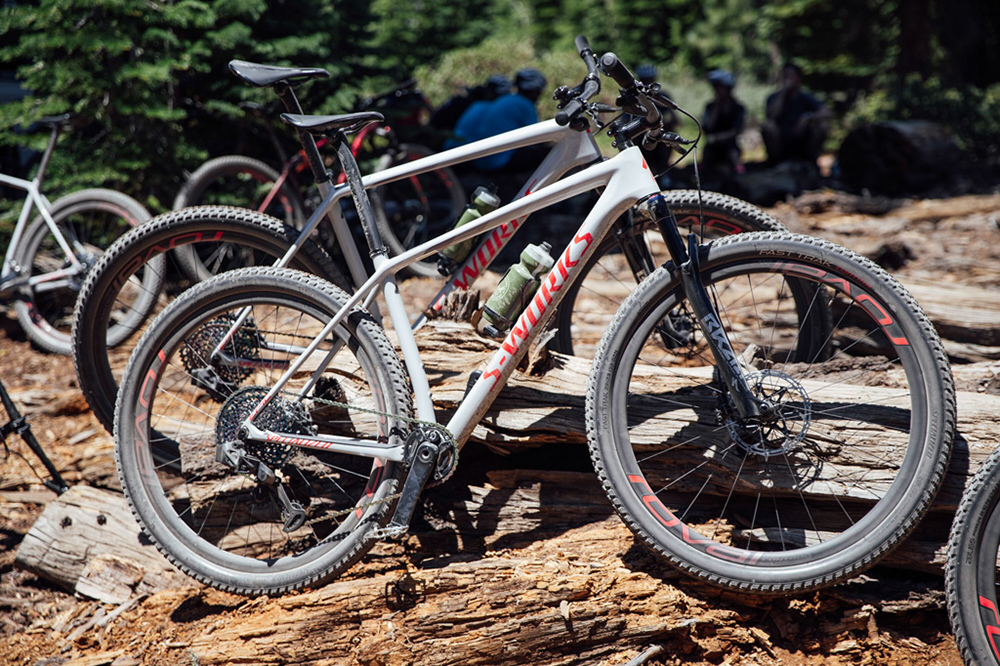
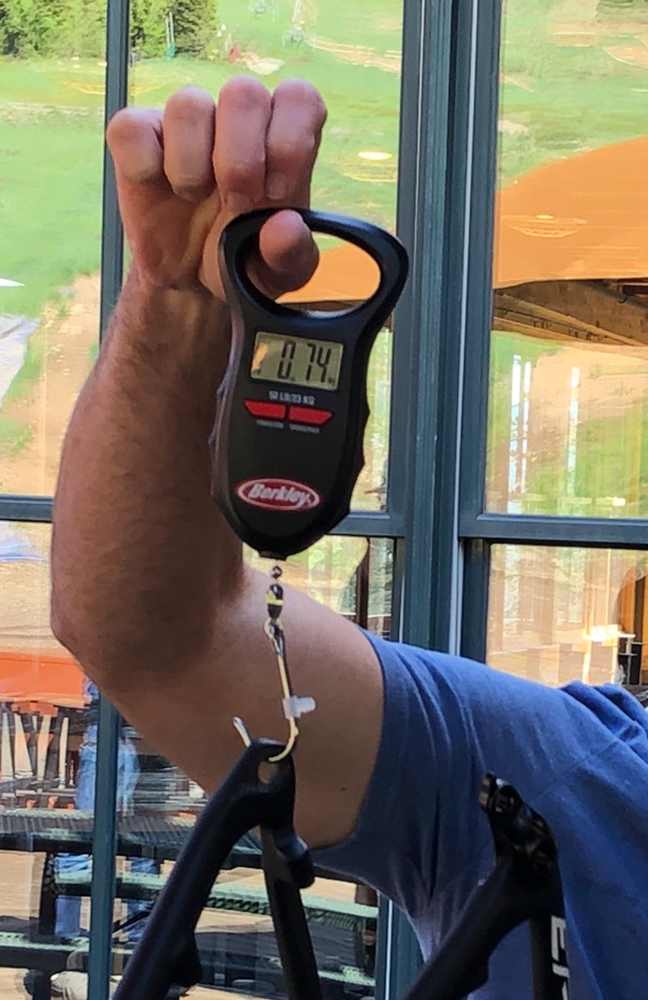
Cutting zero corners, the top-end Epic S-Works frame is 75 grams lighter than the previous edition, making it the lightest production hardtail available. A size medium frame, painted, with all necessary hardware attached, (and with a threaded bottom bracket!), tips the scales at 790 grams. Most of the weight savings are achieved by using their latest FACT 12M carbon and removing every redundant ply of fibre and resin in the frame's layup. It was mentioned that 30 different types of pre-preg carbon are used in the build; a complicated layup schedule, to say the least. Comfort was improved by tuning the vertical compliance of the frame. With smaller diameter seat stays and shaping the now 30.9mm seat tube in an arch around the rear wheel, Specialized was able to retain the forgiving nature the Epic HT is known for.
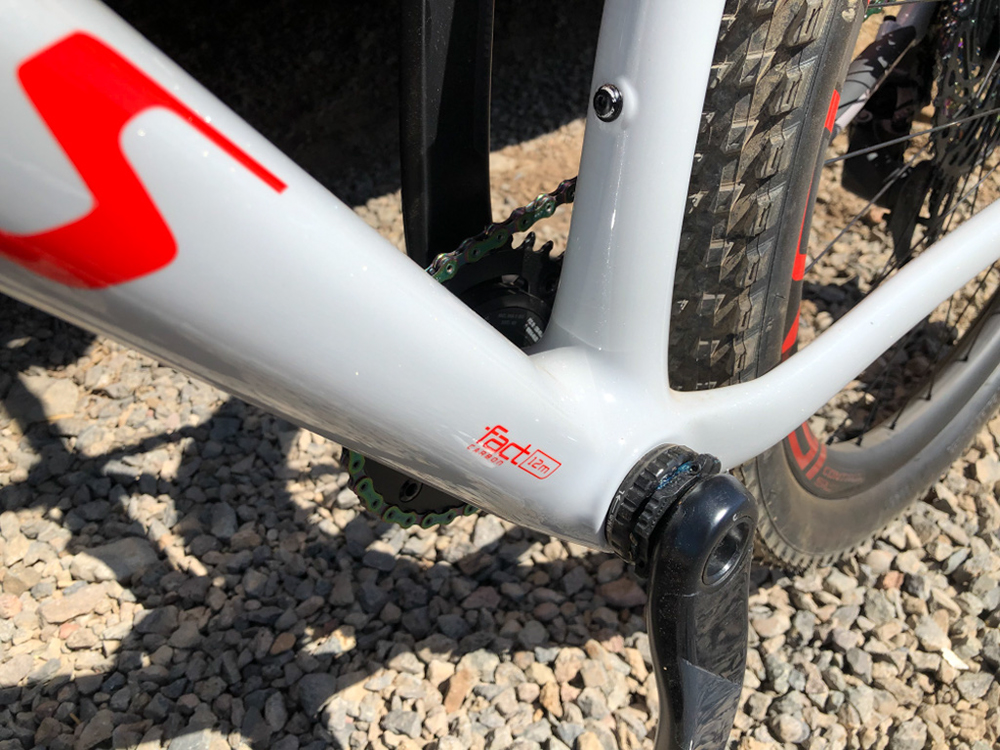
FACT 12M carbon and a threaded bottom bracket for the S-Works. Our test bike had 2.3 tires with lots of room. The Epic is listed as accepting up to a 2.4, tire adding to its versatility.
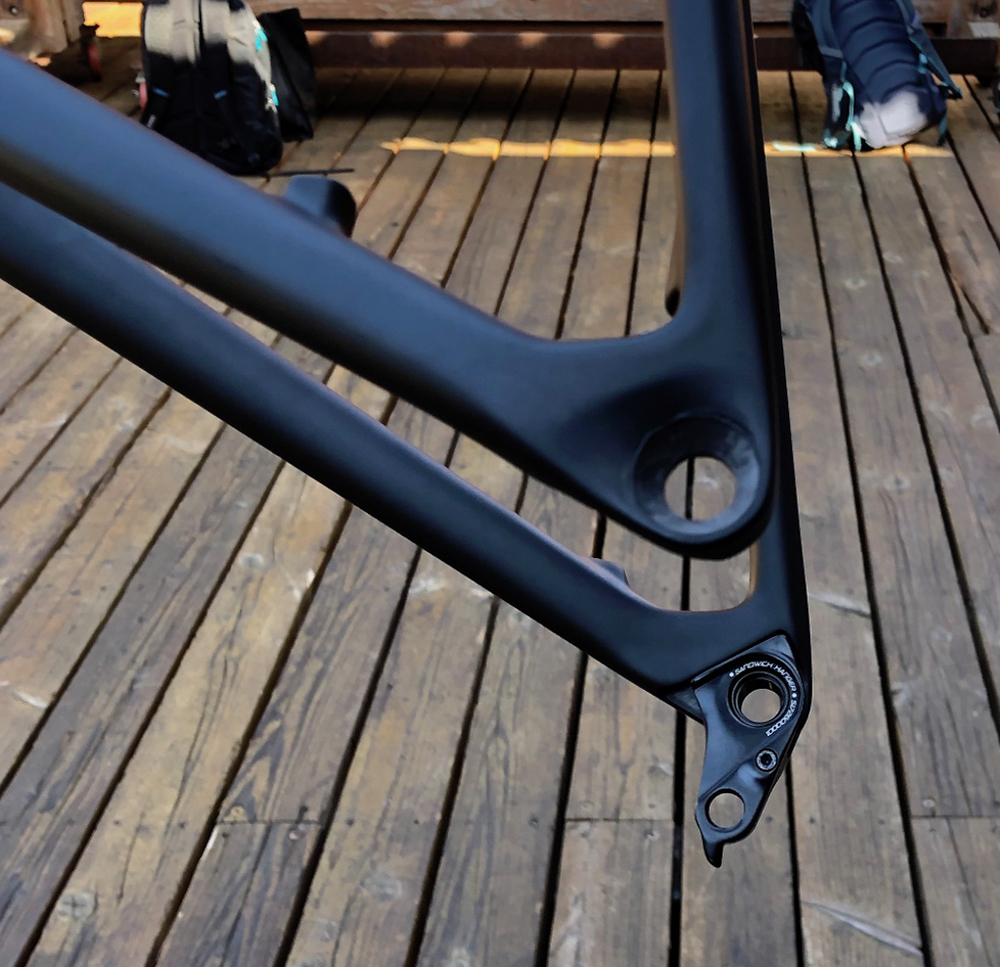
Specialized removed the aluminum inserts on the new frame. They've gone to full carbon dropouts to save weight
Unique to Specialized is the development of Rider-First frame tunes, where each frame size has a unique layup schedule. Gone are the days of really stiff and unforgiving small frames or flexy XL frames. Rider-First ensures the same feel and spirit of the bike across all sizes, no matter the height of the rider.
The front-end geometry was updated to include a slacker head tube angle, now 68.5 degrees, and a longer front-center. And to maintain the quick handling and spry feel, the fork offset was decreased to 42mm. The tire clearance was increased and the Epic now can fit up to a 2.4" tire. Our demo bikes had 2.3" Fast Trak tires with about 8mm of clearance at the bottom bracket.
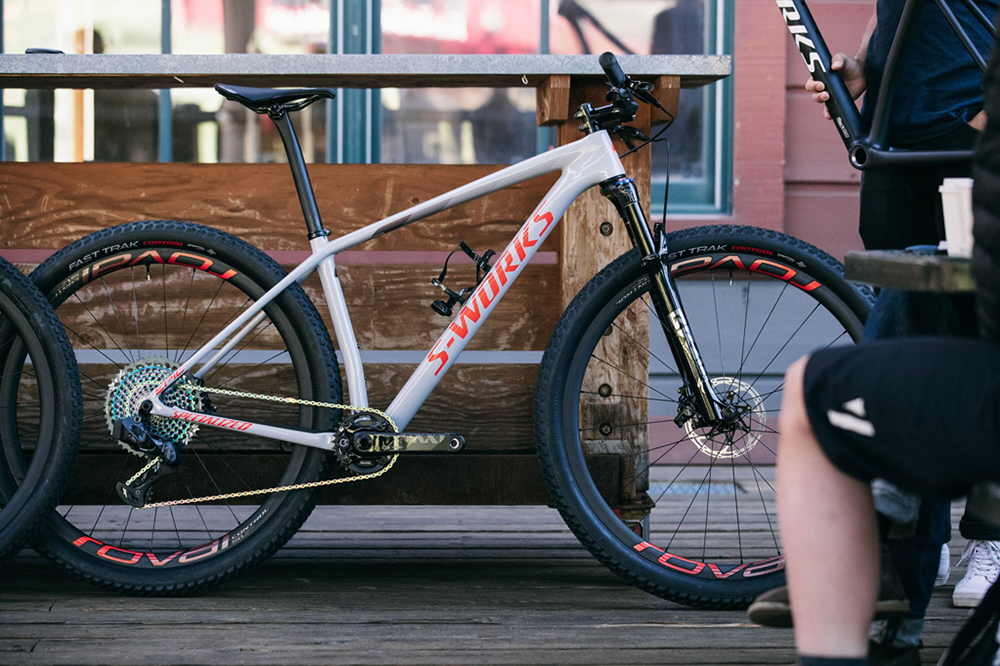
Photo Harooks
Specialized offers seven complete Epic HT models (S-Works, Pro, Expert, Comp, and Carbon 29) as well as an S-Works frameset. Among the models, there are two levels of Epic frames; the S-Works which is made using the new FACT 12M carbon, and the Pro, Expert and Comp, all which are made using FACT 11M carbon. The main difference between the two is weight, with the S-Works being 140 grams lighter.
Pricing starts at $2110 USD for the Carbon 29 all the way up to $9510 USD the top-end S-Works SRAM model. The S-Works frame-only option is $2500 USD.
I had the opportunity to ride the Epic S-Works for an afternoon in Truckee, California. The Specialized folks put a great point-to-point ride together, incorporating a selection of trails diverse enough to get a great overall feel for their new bike.
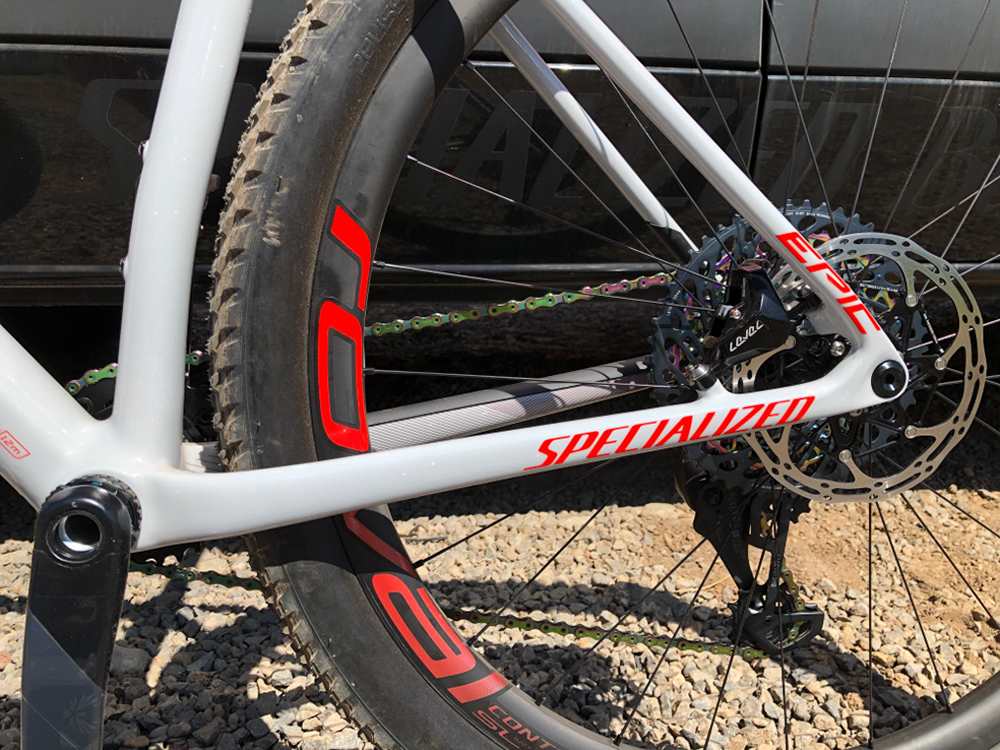
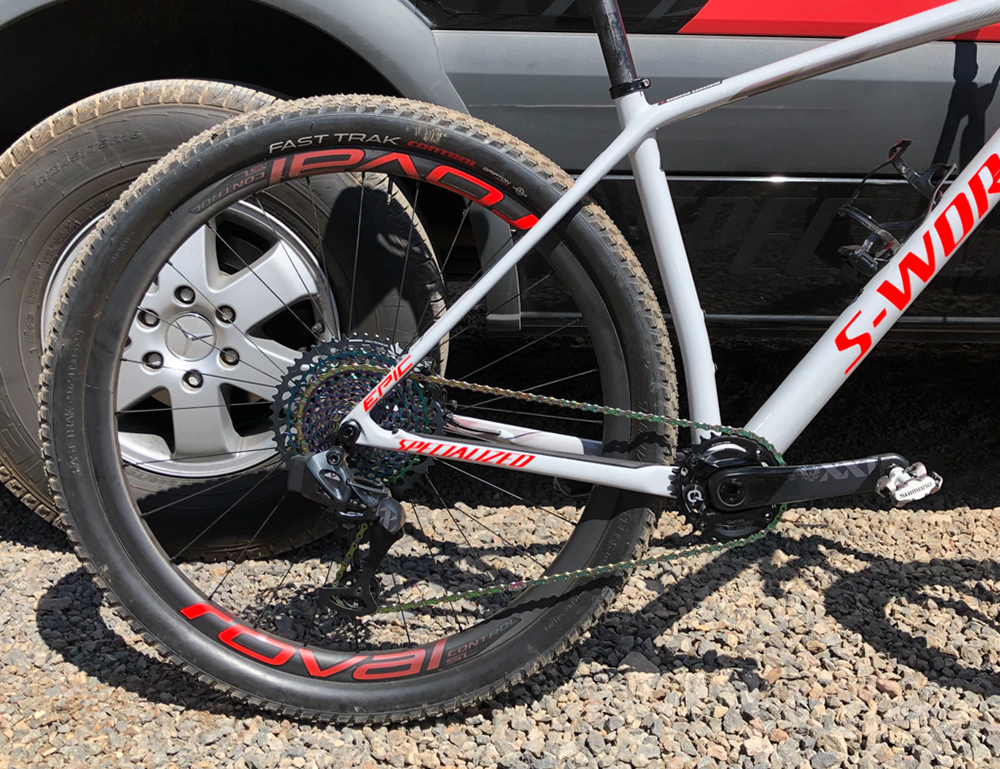
The S-Works model is equipped with SRAM's top level Eagle XX1 AXS group and Quarq power meter. An impressive build for sure. I was really impressed with the shifting performance of this new wireless group
Our test bike was the top-end S-Works model equipped with a Rock Shox SID WC Brain fork, Roval Control SL carbon wheels, and SRAM XX1 AXS Eagle drivetrain; a World Cup racer-type of build, to say the least.
The ride began on a long service road traverse out of Northstar bike park and my initial impression of the Epic was how light it felt. It felt almost road bike light underneath me. Specialized kept the chainstays relatively short at 430mm, keeping the rear wheel tucked nicely behind the seat tube making. It felt like a climbing machine.
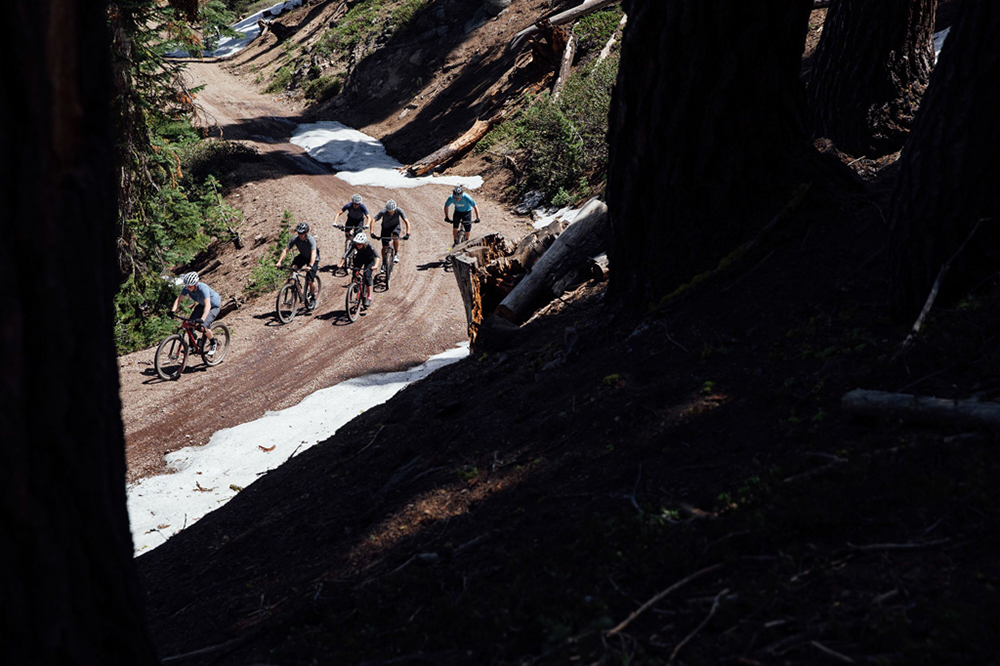
We started our day on a long service road climb. The Epic felt as light as a road bike pedalling our way up to the snow
- photo Dylan Dunkerton
The terrain changed from hard sandy gravel to ribbons of manicured granite trail, berms, and a bunch of natural rock features. With the terrain ever-changing, I found myself constantly in and out of the saddle. Lateral frame flex went unnoticed, even when stomping on the pedals. My size large test bike had a balanced feel between the wheels. The front end of the Epic is where most of the geometry has been updated; now with a longer front-center, and slacker headtube, the bike was easy to control when riding down steep parts of the trail. I was waiting for that sketchy over the handlebar feel that's typical of many race bikes, but it never felt like that. But there were a couple of times on some steep rock rolls were I was secretly wishing for a dropper post.
This was my first long ride with a Brain-equipped fork and I really came to appreciate it. The setup was straight forward and once I set the air pressure and rebound to my liking, I pretty much forgot all about it. There's no lock-out lever cluttering the handlebar, and the fork remained firm over the smooth stuff and active when the terrain called for it. It was definitely a good first impression.
Overall, the Epic HT was impressive, to say the least. It's amazingly light and the tuned stiffness made it feel fast, stable at speed, and quick handling without feeling skittish. The increased front-center kept me behind the front axle on the steeps which really adds to how versatile the bike feels. If I could make one change, I'd take the weight penalty and include a dropper post. Then it would become a bike so much more than just a race bike.
| Return to Canadian Cyclist homepage | Back to Top |




